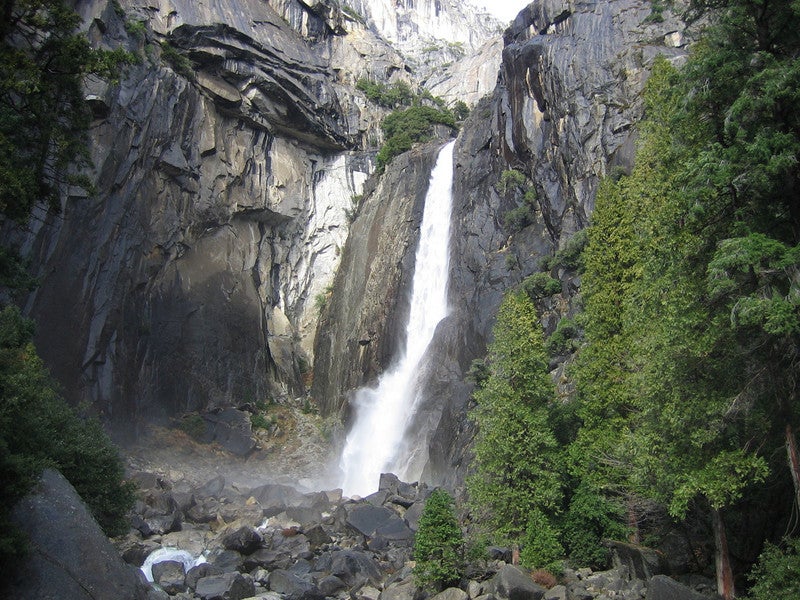How Yosemite National Park is Working to Welcome Disabled Visitors

'Lower Yosemite Falls (Photo by Michael Doss'
Every Yosemite visitor should be able to feel the spray from 320-foot Lower Yosemite Fall on his or her face. If this is everyone’s park, everyone deserves to touch the house-size granite boulders just off the paved trails and learn from the educational presentations provided by videos and interpretive rangers. But a key demographic of guests would not have this opportunity without Yosemite’s 2005 effort to make this iconic cascade fully accessible to the disabled. Part of the existing trail reaches a 13.8-percent grade—too steep for many, especially in wheelchairs.
Solution: The park built an alternate route to the base of the falls that climbs through the forest at no more than a 5-percent grade. Crossing braided streams on rock-lined boardwalks, the half-mile trail has several resting logs and an accessible bathroom. But it’s not just accessible to those with mobility limitations. The trail serves the vision- and hearing-impaired with 3D tactile displays like the 3-foot bronze relief map of the watershed built to scale. Information packets come in Braille and films like Spirit of Yosemite have captions. You can even arrange for a sign language interpreter. While not all national parks are this welcoming, expect more accommodations soon with the NPS’s five-year strategic plan to upgrade old facilities and ensure any new projects meet accessibility standards. The magic of the national parks is for everyone, no exceptions.